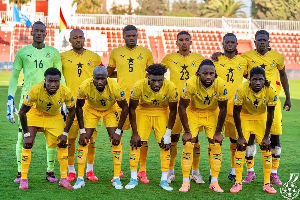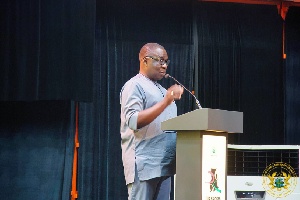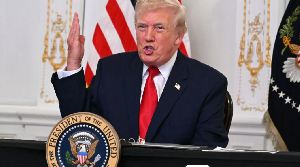Nearly all African countries have Codes of Ethics to guide journalists in seeking “identity and integrity” and connecting people and places. This process has inevitably led to the introduction of Media or Journalism Ethics in the curricula of most institutions offering Mass Communication or Journalism program.
Generally speaking, most of the curricula touch on different aspects of Ethics including Introduction to Ethics, Canons of Journalism, The Journalist’s dilemma, Privacy, Freedom and Responsibility, Freebies, Corruption, Responsibility to the society, Partisanship, Ownership and Environmental issues.
Until about the end of the 20th Century, Journalism education only had to contend with Print, Radio and Television. However, the 21st Century has brought with it new concepts of journalism including Citizen Journalism and On-line Journalism.
These concepts have not only changed Journalism identity and integrity but have concomitantly changed ethical issues in Journalism practice in the Sub-Saharan region.
The ethical issues in Sub-Saharan African Journalism now include: Who and what determine ethical standards? With the rapidity and bombardment of technology how easy it is for the journalist to adhere to ethical standards in news judgement? Whom or who should the journalist be accountable to? What role does economic consideration play in news judgement? Do ethnic, political, religious and other primordial sentiments play any role in African Journalism?
Are Canons of Journalism still relevant in the consideration of 21st century Ethical Issues in Sub-Saharan African journalism? The above issues are examined in this paper.
All major professions in the world are guided by their codes of ethics. One of such professions is journalism.
Much of the literature on professional ethics of journalism underscore the import of ethics including the tenets of African journalism anchored on culture, communality, connecting people and places, accountability, and identity and integrity although there are infractions by practitioners and uncertified practitioners; and as would be revealed, social responsibility theory of the press is consequential to journalism ethics in Sub-Saharan Africa.
It is imperative therefore, that we examine the concept of social responsibility theory of the press, the state of journalism ethics and then, the ethical issues within nine jurisdictions in Sub-Saharan Africa.
Social responsibility theory: The basic assumption of the theory, as enunciated by the Hutchins Commission (1947), is that the press in any society should be responsible to the society in the performance of its functions.
Even though the press is ideally supposed to enjoy immense freedom, it must be seen to be carrying out certain essential functions of mass communication and journalism with the observance of professional ethics.
In other words, the freedom the press enjoys comes with concomitant responsibilities, one of which is showing a serious and committed mind towards observing the canons of journalistic ethics while carrying out the six basic social responsibility functions proposed by the theory.
As the press performs these functions, the avoidance of unethical conducts will make them to be socially responsible; consider public interest; gather accurate, balanced and objective news and stories; and allow for objective analyses of issues of the moment.
The theory is primarily about raising conflict to the plane of discussion. It also canvasses the rights, duties and responsibilities of the press. As stated by Akinfeleye (2003), “the social responsibility theory of the Press came into being as a result of pluralism in media ownership and content of the media, which created uneasiness on the part of the public according to Siebert et al”.
He (Akinfeleye) further explained that media owners wielded so much power that placed them in a position to determine what to publish and how to publish those facts, opinions, voices, and versions leading to the conclusion that the Press was no longer the “free and open-market of ideas as preached by Mill and Jefferson”.
Several authors, including Baran and Davis (2009), stated that it is a post-second World War compromise because, notwithstanding the moves toward professionalization and self-regulation in the United States during the World War II, pressure for greater government regulation of media continued to mount in the resultant anti-communist agitation.
This led to Henry Luce, the Chief Executive Officer of Times Incorporated providing funding for an independent commission to make recommendations on what the role of the press should be. Consequently, the Hutchins Commission Report on Freedom of the Press came alive in 1947.
Because opinions of members of the commission were sharply divided between those who held libertarian views and those who believed in the desideratum for some form of press regulation, the commission put up ‘a synthesis of ideas’ that has since been known as the Social Responsibility Theory of the Press.
Baran and Davis (2009) also disclosed that members of the commission had a tough time deciding the type of press theory that should be followed in USA. Majority of the members opted ‘to place their faith in media practitioners, calling them to redouble their efforts to serve the public’. Quoting Curran (1991), they disclosed that the commission ‘endorsed professional responsibility as a way of reconciling market flaws with the traditional conception of the democratic role of the media’.
Secondly, the commission advocated “journalists’ commitment to higher goals- neutrality, detachment, a commitment to truth involving the adoption of certain procedures for verifying facts, drawing on different sources, presenting rival interpretations”.
Through the foregoing, the commission concluded that “the pluralism of opinion, once secured through the clash of adversaries in the free market, could be recreated through the ‘internal pluralism’ of monopolistic media, while Market pressures to sensationalise and trivialise the presentation of news could be offset by a commitment to inform.”
Lind and Rockler (2001) stated that although the ideals of social responsibility theory have been enduring, their full implications are rarely comprehended by practitioners as they compete in the “ethos of news as business (and) that of news as socially responsible institution”.
McQuail (1987) summarised the basic imperatives of social responsibility theory of the press based on the principle that “certain obligations to society should be accepted and fulfilled by the media; these obligations are to be met by setting high or professional standards of informativeness, truth, accuracy, objectivity, and balance”.
The summary also stated that “within the framework of law and established institutions, media should be self-regulating in accepting and applying the obligations” entrusted on them by the society.
It is to be noted, however, that apart from being “accountable to society, journalists and media professionals are expected to be equally accountable to their employers and the market”.
Foreman (2010) stated that the report of the Hutchins Commission indicted the press of that era as ‘it was neglecting its social responsibility- reporting accurately on news important to society, and choosing instead to focus on sensational stories designed to attract readers rather than inform them’.
From the foregoing, it is apparent that social responsibility theory of the press was and still is a child of necessity and in tandem with the libertarian belief in the imperativeness of the individual and the market place of ideas, while holding that the real competition over ideas will be a mirage without government action to spur media owners and journalists to be socially responsible by offering a diversity of voices and ideas.
This theory also argues that sometimes materials or news the media want to publish might be harmful to a large number of people in the society or that they may affect national security or laws of the land. Consequently, it has become the fashion for media/press organisations the world over to adopt Codes of Ethics to guide their operations.
For example, the Nigerian Press Organisation (1998) consisting of the Nigerian Union of Journalists, the Newspaper Proprietors Association of Nigeria, the Nigerian Guild of Editors, and the Nigerian Press Council accepted through The Ilorin Declaration “the imperative of a Code of Ethics as a vital pillar of journalism and the necessity for the application of ethics to enhance standards” of media practice, and thus gave birth to the Code of Ethics for Nigerian Journalists.
The Code has 15 provisions- Editorial independence, Accuracy and fairness, Privacy, Privilege/Non-disclosure, Decency, Discrimination, Reward and gratification, Violence, Children and minors, Access to information, Public interest, Social responsibility, Plagiarism, Copyright, and Press freedom and responsibility.
Plaisance (2009) urged mass communication practitioners to recognise their obligations as moral agents by understanding the scope and meaning of key principles of media ethics.
He argued that ‘too many lapses of media practitioners are the result of allowing decidedly amoral factors- deadline pressures, stark economic imperatives, corporate and ‘branding’ interests- to define the quality of their work.”
Like any other theory, the Social responsibility theory of the press has its strengths and weaknesses. Baran and Davis (2009), revealed the strengths and weakness of the Social responsibility theory in the following order:
Strengths: Values media responsibility; Values audience responsibility; Limits government intrusion in media operation; Values diversity and pluralism; Allows reasonable government control of media; Aids the “powerless” by giving them a voice; Appeals to the best instincts of media practitioners and audiences; and, Is consistent with democratic tradition.
Weaknesses: Is overly optimistic about media’s willingness to meet responsibility; Is overly optimistic about individual responsibility; Underestimates power of profit motivation and competition; and, Legitimises status quo.
Since Social responsibility theory remains the normative theory guiding most media operations in the democratic world (Baran and Davis, 2009), what role and influence can a socially responsible and responsive press assert within the nine countries under survey? A socially responsible and responsive press can assert the following role and influence, according to Imhonopi and Urim (2004):
Surveillance role; Status conferral role; Information Bank from which society draws rational decision; Enlightenment of citizens about government’s policies; The temperature and thermometer of the people; Vanguard (promoter and tribune (defender) of the people’s interest; Aids free and smooth flow of economic activities; Instrument for making public policy; Opinion-moulding institution; Entertainment; Projection and promotion of the image of the local environment; and, Builder of morality and value system.
To be continued
Yusuf is a Fellow, Dept of Mass Communication, University of Lagos. He is a lawyer and former Ogun State Commissioner of Information
Opinions of Sunday, 17 July 2016
Columnist: dailytrust.com.ng















